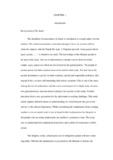Please use this identifier to cite or link to this item:
https://elibrary.tucl.edu.np/handle/123456789/936| Title: | Indigenous Mathematical Concepts of Gopali Community from their Cultural Perspective |
| Authors: | Dahal, Ramchandra |
| Keywords: | Concepts;Community |
| Issue Date: | 2007 |
| Publisher: | Faculty of Education |
| Institute Name: | Faculty of Education |
| Level: | M.Phil. |
| Abstract: | This study is focused on the perception of mathematical knowledge among illiterate Gopali people of Chitlang village of Makwanpur district. The Gopalis taken for the study are recognized as gwala/ sapu in the social community of Nepal. They have the identity of first ruler of ancient Nepal. So, the study concerned with ethno-mathematics this community is the appropriate one. The traditional practices followed by them were the main area of the study. Especially the ethno-mathematical practices, existing in Gopali people were the sources of the study. The study is focused on their measurement system, numerical system, and geometrical practices among them. Illiterate children, women and men were considered for in-depth study and common practices were achieved from the religious as well as cultural activities in the group participation. The participant observation and interview were two tools adopted for the collection of information. The study was guided by ethno-methodology as well as grounded theory. The study concluded that the ethno-mathematical practices has supported in preserving their cultural identity. Naturally, the ethno-mathematics and culture are interlinked. The perception of mathematics preserved by Gopalis differs from the school mathematics. There is discontinuity between traditional and modern measurement system but similar practices are found still among the illiterate group. Natural units are still practiced in present context. In the case of domestic purpose, mathematical concepts adopted by them are sufficient. The study is also concluded that the origin of ethno-mathematics is preserved by them. We can not claim that the formal mathematics is adopted in their traditional practices. Whatever mathematical concepts they have seem practical. The study demands the cultural preservation and academic application at their primary level education from which cultural identity as well as importance of indigenous knowledge is preserved. For these a serious planning is required while designing curriculum and in teaching-learning process as well. The study tried to relate their ethno-mathematical practices in the educational implication. The transformation of learning from old generation to new generation can be exited in the similar context but in different situation it cannot be applicable and has great chance to disappear. The new generation of Gopalis are involved in different occupations and some of them have been migrated which may led to the non existence of indigenous knowledge. So, the documentation and implementation of practices of ethno-groups should give priority for the preservation of cultural identity. The conclusion drawn from the study is the identification of ethno-mathematics existing in their cultural and religious practices which should be preserved and at the same time, it has to chanalyzed in the formal education of the community. It is being the study of ethno-mathematics, the events, and practices of the Gopalis were observed in the mathematical sense or their knowledge related to mathematics is tried to cover by the study. Whatever information was mentioned here is based on the Gopalis situated in Makawanpur area. The interpretation of collected information carefully given priority for the cultural preservation, but it is not good to modify the cultural practices. Ramchandra Dahal |
| URI: | http://elibrary.tucl.edu.np/handle/123456789/936 |
| Appears in Collections: | Mathematics Education |
Files in This Item:
| File | Description | Size | Format | |
|---|---|---|---|---|
| Cover Page(6).pdf | 30.9 kB | Adobe PDF |  View/Open | |
| Chapter Page(1).pdf | 568.81 kB | Adobe PDF |  View/Open |
Items in DSpace are protected by copyright, with all rights reserved, unless otherwise indicated.
